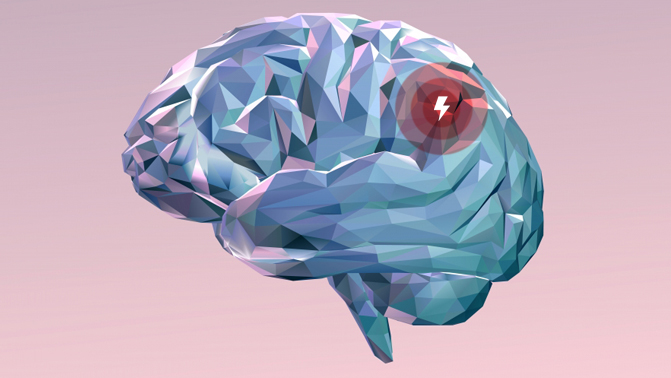
Wondering how to avoid having a stroke?
Stroke is the number three killer in the United States, affecting almost 800,000 people each year, according to the National Stroke Association.
These “brain attacks” occur in two ways, either when blood flow to the brain is interrupted (an ischemic stroke) or when a blood vessel in the brain leaks or bursts (a hemorrhagic stroke).
For 144,000 people each year, the result is death. Hundreds of thousands of others are left with long-term disabilities.
Both uncontrollable and controllable risk factors play important roles in deciding who get strokes and who does not, such as genetics, age and race – for example, the prevalence of stroke in blacks is about twice that of whites.
Also, stroke prevalence is more than twice as high in individuals with fewer than 12 years of education, compared to college graduates.
In addition, stroke risk in people newly diagnosed with type 2 diabetes is double that of the general population. Various studies have shown this.
Out of all the various stroke risk factors, scientists have found that the below seven are at the very top:
Eating A High-Fat Diet
The same foods associated with heart attacks, including red meat and anything fried, can also raise your risk of a brain attack.
At the recent American Stroke Association’s (ASA) International Stroke Conference, researchers from the University of North Carolina presented findings that post-menopausal women who consumed high-fat diets had 40 percent more incidences of ischemic stroke than low-fat eaters.
Trans fats, found in processed foods like pastries and crackers, seem particularly nasty: The group of women who consumed seven grams of trans fat each day had 30 percent more stroke incidents than those who ate one gram.
So what to eat instead?
Multiple studies suggest that a Mediterranean-inspired diet can lower stroke risk. That means lots of vegetables, whole grains, fish, olive oil, nuts and seeds, and very little red meat and sweets.
Being A Single Man
If you’re a man who’d like to cut his chances of a fatal stroke, get hitched.
A University study of more than 10,000 men found that those who were married at midlife were 64 percent less likely to die of a stroke during the next 34 years than single men. The data was adjusted for other stroke risk factors like socioeconomic status, blood pressure and smoking.
But there’s a catch: The marriage has to be a happy one. Men who reported dissatisfying marriages were just as likely as single men to die of a stroke. Researchers reported these findings at the ASA’s International Stroke Conference.
Being Unhappy
Happiness is music to your cardiovascular system.
Researchers at the University of Texas Medical Branch in Galveston reported in 2001 that among older individuals, positive moods and attitudes protected against strokes. Even incremental increases in happiness helped.
For every step up on the researchers’ happiness scale, male participants’ stroke risk dropped 41 percent. Women’s risk dropped 18 percent per happiness unit.
Even if you’re not happy, it might pay to act like you are. The researchers speculate that happy people are more likely to get medical care, exercise and stay healthy. These are all protective factors against stroke.
Being Obese Can Cause Stroke
More weight means a higher risk of stroke, according to researchers from the University of Minnesota.
In a study presented at the International Stroke Conference, researchers followed more than 13,000 Americans for 19 years. They found that the risk of stroke in people with the highest body mass index (BMI) was 1.43 to 2.12 times higher than in those with the lowest body mass index. BMI is calculated with a person’s height and weight and is considered an indicator of body fatness.
The reason for the correlation is that some stroke risk factors are worsened by obesity, study co-author Hiroshi Yatsuya said in a statement. The biggest culprits, according to the data are high blood pressure and diabetes.
Smoking Can Cause Stroke
Lighting up nearly doubles your risk of stroke, according to the American Heart Association (AHA). Fortunately, quitting can drop that risk back down, even for heavy smokers. One 1988 study found that former smokers had the same rate of stroke as nonsmokers five years after snuffing their last cigarette.
Being Born In The Wrong Demographic (for a stroke)
Not every risk factor is under your control.
Black Americans and females are at a disadvantage when it comes to stroke.
Researchers report that Blacks are twice as likely as whites to have a stroke. Women aged 35 to 64 are almost three times as likely to have a stroke as men of the same age. Reasons may be that Blacks have higher rates of high blood pressure and diabetes. Women in midlife carry more abdominal fat than men, all risk factors for stroke.
Living The “Southern” Lifestyle Can Cause a Stroke
The swath of stroke-prone states across the Southeastern United States is the “Stroke Belt”. These states include North Carolina, South Carolina, Georgia, Tennessee, Arkansas, Mississippi, and Alabama.
But recent research suggests that just being born and spending your childhood in one of these states raises your risk for stroke. This could happen even if you move away later.
A study published in the journal Neurology in 2009 gave insight into strokes and location. Harvard public health professor Maria Glymour and her colleagues shared data about blacks and strokes. According to research, being born in the Stroke Belt increased the risk of stroke by 22 percent. For whites, the number was 30 percent. Part of the reason may be due to risk factors like poor diet, smoking and obesity. This may start earlier in southern states, Glymour told LiveScience.
“By the time that they’re middle-aged and we’re enrolling them in our studies, it looks like lots of people have those risk factors,” she said. “But maybe people in the South have been carrying them for longer.”